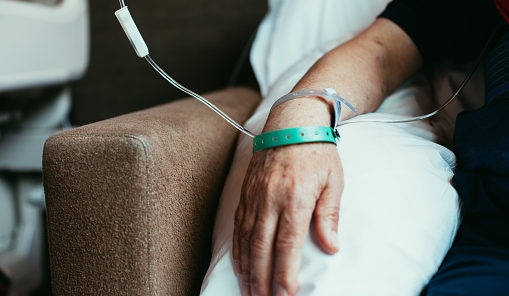Phase 3 cancer clinical trials largely consist of white patients, making them not generalizable to the population, according to a study.
“The proportion of minorities in the US population is 36.3% and minorities remain burdened with cancer and under-representation in cancer clinical trial enrollments. Improved participation in the clinical trials offers benefits to overcome the barriers to screening and more advanced cancer stage distribution and can result in more effective intervention and improved survival,” the researchers explained. The present analysis focused on race and age distribution of clinical trial participants.
The researchers performed a literature search primarily consisting of trials published from Jan. 1, 1999, through Jan. 1, 2019. Key words used for the searches were breast cancer, breast neoplasm, breast carcinoma, lung cancer, lung neoplasm, lung carcinoma, colon cancer, colon malignancy, colon carcinoma, AML, ALL, and DLBCL. Eligible trials were those that used drug interventions and had published results. The search yielded 1,436 studies for screening. Studies on six types of cancer were included—three solid organ cancers (breast, colon, lung) and three hematological cancers (acute myeloid leukemia [AML], acute lymphoid leukemia [ALL], diffuse large B-cell lymphoma [DLBCL]).
In racial analyses, there were 39 breast cancer studies, 39 lung cancer studies, nine colon cancer studies, three DLBCL studies, seven AML studies, and six ALL studies.
According to the current U.S. cancer statistics, cancer incidence rates per 100,000 are: Whites, 436.6; Blacks, 433.2; Hispanics, 334.7; Asians, 276.8; and American Indians/Alaska natives, 274.5. However, Black patients were underrepresented in studies of all cancer types, except lung.
The racial makeup of patients in breast cancer studies—which encompassed 24,170 patients overall—was: White, 73.76%; Black, 3.55%; Asian, 17.41%; and “other” categories (including Native Americans, Hawaiians, and unknown or reported as “other” in the study), 5.27%. In colon cancer studies, which encompassed 5,537 patients, the racial makeup was: White, 74.25%; Black, 2.6%; Asian, 21.15%; and “other,” 2%. In lung cancer studies (23,594 patients total), the racial makeup was: White, 39.66%; Black, 30.63%; Asian, 26.06%; and “other,” 3.65%.
In DLBCL studies—which had 687 total patients—the racial makeup was: White, 77.73%; Black, 1.46%; Asian, 16.59%; and “other,” 4.22%. In AML studies (n=4,479 total patients), the racial makeup was: White, 92.86%; Black, 2.34%; Asian, 2.28%; and “other,” 2.25%. Finally, in ALL studies—encompassing 1,940 total patients—the racial makeup was: White, 77.53%; Black, 6.7%; Asian, 5.88%; and “other,” 9.9%.
The study was published in American Journal of Translational Research.
“Most Phase III clinical trials except for lung cancer, predominantly consisted of Caucasian patients. Applying the results of these trials to patients of other races should be done with caution,” the researchers concluded.
Credit: Original article published here.










